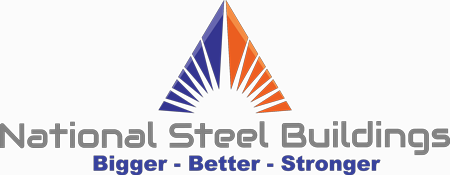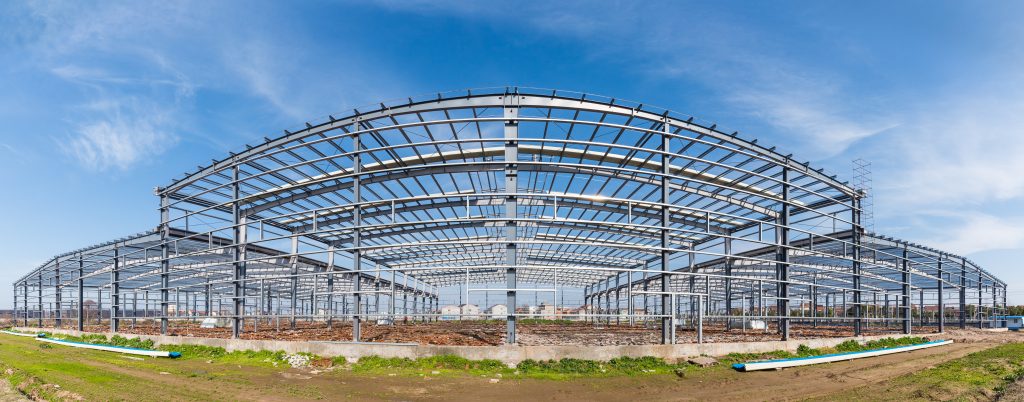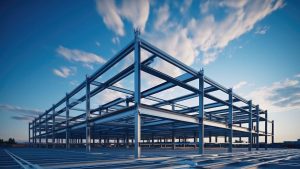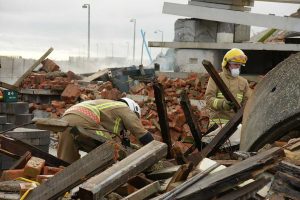Steel building kits are an increasingly popular option for those looking to construct sturdy, long-lasting structures quickly and efficiently. In this comprehensive buyer’s guide, we’ll delve into the world of steel building kits, exploring their advantages over other construction materials, what to look for when choosing a kit, planning and site preparation tips, a step-by-step guide to erecting your steel building, customisation options, budgeting and financing advice, maintenance tips, and where to find the best suppliers. Armed with this knowledge, you’ll be well-prepared to embark on your next steel-building project with confidence.
What are Steel Building Kits and Why Should You Consider Them?
Definition and Benefits
Steel building kits are pre-engineered metal structures that are manufactured and shipped to the construction site in pieces, ready for assembly. These kits are designed to be quick and easy to assemble, offering a convenient and cost-effective solution for constructing durable, low-maintenance buildings.
Versatility
One of the key benefits of steel building kits is their versatility. They can be used for a wide range of purposes, from residential and commercial buildings to agricultural and industrial facilities. This makes them an ideal choice for those looking to build anything from a garage or workshop to a storage facility or even a large-scale factory.
Sustainability
Another reason to consider steel building kits is their eco-friendliness. Steel is one of the most recyclable materials in the world, and using a steel building kit can significantly reduce your project’s carbon footprint. Additionally, steel buildings are energy-efficient and can help lower heating and cooling costs, making them a smart choice for environmentally conscious builders.
Understanding the Advantages of Steel Building Kits Over Other Construction Materials
Strength and Durability
Steel is renowned for its strength and durability, making it an ideal material for constructing buildings that can withstand the test of time. Unlike wood or concrete, steel is resistant to termites, rot, and warping, ensuring a long-lasting structure with minimal maintenance.
Speed of Construction
Another key advantage of steel building kits is the speed at which they can be assembled. With all components pre-engineered and cut to size, the construction process can be significantly faster than traditional building methods, saving both time and labour costs.
Cost-Effectiveness
Finally, steel building kits are often more cost-effective than other construction materials, thanks to their efficient manufacturing processes and reduced labour requirements. The upfront cost of a steel building kit may be higher than wood or concrete, but the long-term savings in maintenance and increased durability make it a wise investment.
What to Look for When Choosing a Steel Building Kit
Quality Materials
When selecting a steel building kit, it’s crucial to ensure that the materials used are of high quality. Look for suppliers that use premium-grade steel with a high tensile strength and corrosion resistance, as well as quality fasteners, insulation, and other components.
Design Flexibility
Another important factor to consider is the design flexibility offered by the steel building kit. Choose a supplier that provides a variety of customisation options, such as various roof styles, wall panels, and colour choices, to create a building that meets your specific needs and preferences.
Warranty and Support
Lastly, a good steel building kit should come with a robust warranty and excellent customer support. This will ensure that you are protected against any defects or issues that may arise during the construction process and that you have access to assistance and advice should you need it.
Planning Your Steel Building Project: Tips and Considerations
Determine Your Needs
Before embarking on your steel building project, take the time to determine your specific needs and requirements. This includes the purpose of the building, the desired size, and any additional features or customisations that you may require.
Obtain Necessary Permits
Once you have a clear idea of your project, it’s essential to research and obtain any necessary building permits and approvals. This may involve working with local authorities to ensure your proposed structure complies with zoning regulations, building codes, and other local requirements.
Plan Your Timeline
Proper planning is crucial for a smooth construction process. Develop a realistic timeline for your project, considering factors such as site preparation, delivery of materials, assembly, and any additional work required to complete your building. This will help you stay on track and avoid delays.
Assessing Your Site: Preparing the Ground for Your Steel Building
Choose the Right Location
Selecting the right location for your steel building is essential. Consider factors such as accessibility, proximity to utilities, and any potential obstacles or challenges that may arise during construction. Additionally, ensure that the site has adequate drainage and is level to facilitate a smooth building process.
Conduct a Site Survey
Before commencing construction, it’s important to conduct a thorough site survey. This will help identify any potential issues with the site, such as underground utilities, easements, or other obstacles that may impact your project. A professional surveyor can provide valuable information and recommendations to ensure your site is prepared correctly.
Prepare the Foundation
A strong foundation is crucial for the stability and longevity of your steel building. Work with a qualified contractor to design and construct a suitable foundation for your structure, whether it’s a concrete slab, piers, or another type of foundation. Proper preparation will ensure your building remains sturdy and secure for years to come.
Erecting Your Steel Building Kit: Step-by-Step Guide
Unload and Organise Materials
Upon delivery of your steel building kit, carefully unload and organise the materials. This will make the assembly process more efficient and ensure that all components are accounted for.
Assemble the Frame
Begin by assembling the steel frame according to the manufacturer’s instructions. This will typically involve bolting together columns, beams, and rafters to create a sturdy skeleton for your building.
Install Wall and Roof Panels
Once the frame is in place, proceed with the installation of the wall and roof panels. These panels should be securely fastened to the frame, creating a weather-tight and energy-efficient envelope for your building.
Customising Your Steel Building: Options and Accessories
Exterior Finishes
Customise the appearance of your steel building with a variety of exterior finishes, such as metal siding, brick, or stucco. This can help your structure blend in with its surroundings or stand out as a unique architectural feature.
Doors and Windows
Personalise your steel building with doors and windows that suit your needs, whether it’s a simple pedestrian door, large overhead door, or energy-efficient windows to allow natural light into your space.
Interior Options
Don’t forget about the interior of your steel building. Consider options such as insulation, partition walls, and custom flooring to create a comfortable and functional space that meets your requirements.
Costing Your Steel Building Project: Budgeting and Financing
Estimating Costs
To budget for your steel building project, begin by estimating the costs of materials, labour, and any additional work required, such as site preparation or finishing touches. Be sure to account for any potential contingencies or unforeseen expenses that may arise during construction.
Comparing Quotes
Obtain quotes from multiple steel building kit suppliers and contractors to ensure you’re getting the best value for your money. Remember to compare not only the price but also the quality of materials, warranties, and customer service.
Financing Options
If you need assistance in financing your steel building project, explore various financing options, such as bank loans, lease-to-own agreements, or manufacturer financing programs. Choose the option that best suits your financial situation and project requirements, and be sure to carefully review the terms and conditions before committing.
Caring for Your Steel Building: Maintenance and Longevity
Regular Inspections
To ensure the longevity of your steel building, conduct regular inspections to identify any potential issues or damage. This includes checking for signs of rust, loose fasteners, or any other structural concerns that may need attention.
Cleaning and Maintenance
Keep your steel building clean and well-maintained to prolong its lifespan. This may involve periodic washing of the exterior, cleaning gutters and downspouts, and maintaining any moving parts such as doors and windows.
Addressing Issues Promptly
If you discover any issues during your inspections, address them promptly to prevent further damage. This may involve repairing or replacing damaged components, applying rust-resistant coatings, or seeking professional assistance to resolve more complex issues.
Finding the Best Steel Building Kit Suppliers: Reviews and Recommendations
Research Suppliers
Take the time to research various steel building kit suppliers, comparing their products, pricing, and customer reviews. Look for suppliers with a strong reputation for quality materials, excellent customer service, and reliable delivery times.
Seek Recommendations
Ask friends, family, or colleagues who have completed steel building projects for recommendations on suppliers and contractors. Personal experiences can provide valuable insight into the quality of a supplier’s products and services.
Check Credentials
Before committing to a supplier, verify their credentials and affiliations with industry organisations. This can help ensure that you’re working with a reputable company that adheres to industry standards and best practices.
Conclusion
With a clear understanding of the advantages, planning considerations, and customisation options available for steel building kits, you’ll be well-equipped to embark on your next construction project. By carefully selecting a quality supplier, preparing your site, and following the proper steps for assembly and maintenance, you’ll enjoy a durable, long-lasting steel building that meets your needs and stands the test of time.




